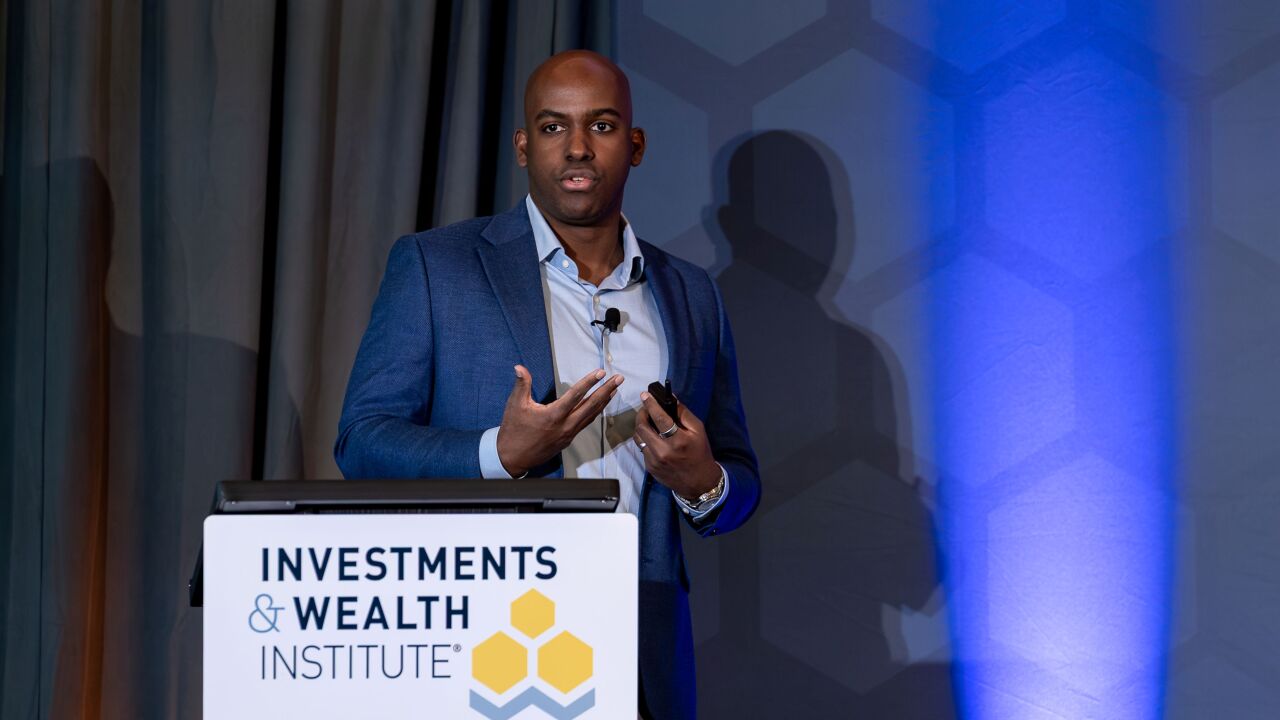
In coming years, the broker-dealer business model will be under threat from the looming rollout of the Department of Labor’s fiduciary rule, which at best will likely reduce upfront commissions and drive a shift toward more level compensation for advisors, and some predict may eventually eliminate product commissions altogether.
Notably, a world without commissions is not necessarily the death knell for advisors. The non-commissioned RIA segment of advisors has already experienced great growth in recent years, and most brokers think it’s reasonable to be required to give advice in the best interests of their clients.
However, the ongoing evolution of advisors, from securities product salespeople to actual advisors, is creating an existential crisis for broker-dealers. After all, in a fiduciary world where advisors are paid directly by their clients for advice, what is the purpose or need for a broker-dealer intermediary at all?
KEY TO STAYING RELEVANT
In the long run, this means that broker-dealers will be compelled to reinvent their business (and revenue) models altogether to remain relevant in a world of advisors that rely on them — not as intermediaries facilitating the distribution and sale of third-party or proprietary securities products, but as advisor support platforms that help facilitate the success of advisors who actually are paid for their advice.
The modern version of the broker-dealer traces its roots to the aftermath of the Crash of 1929, out of which came the
As the compound name implies, broker-dealers existed to fulfill two primary functions: to execute securities trades in their own account as dealer, and to execute securities trades on behalf of customers as broker. Notably, a broker-dealer was attached typically to an investment bank responsible for assisting companies in raising (i.e., issuing) debt and equity capital. Thus, the process of raising funds in capital markets would involve an investment bank facilitating the issuance of stocks and bonds, which would then be held in the inventory of the broker-dealer, and stockbrokers would then be responsible for selling the newly issued securities from the broker-dealer’s inventory to investors.
In the decades following the act, the scope of broker-dealers expanded to include the sale and distribution of an ever-widening range of registered securities products — beyond just the stocks and bonds in the broker-dealer’s inventory, or brokering trades on the securities exchanges on behalf of customers. Most notably, this included the rise of the mutual fund, a securities product that could be brokered (i.e., sold) by the representatives of a broker-dealer. In this context, the mutual fund would pay the broker-dealer a selling concession for distributing its product, a portion of which the broker-dealer would then pass along as compensation to the broker in the form of a sales commission.
The growth of mutual funds (and, to a lesser extent, other registered securities products) was so successful that by the ‘70s and ‘80s, there was enough money to be made just by brokering the sale of securities products and generating commissions. This gave rise to the independent broker-dealermodel. The key feature of an independent broker-dealer was that the position generally had no direct affiliation to an investment bank or company, and thus was not selling its own proprietary stocks, bonds, or other securities products. Instead, independent broker-dealers sold third-party securities, independent of the company itself.
In turn, the rise of the independent broker-dealer meant the role of broker-dealer shifted from dealing in securities inventory (to sell to customers) or packaging securities products (to sell to customers) to overseeing the sale of third-party securities products, including vetting/evaluating the products for sale, managing and overseeing the sales process (i.e., compliance oversight of brokers), and collecting and allocating the sales commissions that were paid.
As the registered representatives of broker-dealers — both independent and captive insurance or wire house broker-dealers — sought to add value to clients, they increasingly offered a range of advice to consumers as well, to the point that most who worked at such firms would now be variously called advisors or consultants.
Notwithstanding this shift, though, so-called advisors who work for broker-dealers are still legally in the business of selling (proprietary or third-party) securities products and offering related brokerage services. In fact, the legal reality is that an
ARE B-Ds IRRELEVANT IN A FIDUCIARY FUTURE?
As financial advice moves inexorably toward a fiduciary future, the fundamental challenge for broker-dealers is that they operate primarily to facilitate the sale and distribution of securities products. They were never envisaged to support the delivery of advice, particularly in a world where advisors were compensated directly for their advice via fees and not with commissions paid by securities product providers for the sale of their products (or commissions paid directly by the broker-dealer for the sale of its own proprietary products). In other words, if the future job model for advisors is to get paid for dispensing advice, and not the sale and distribution of securities products, where’s the relevance of a broker-dealer who exists primarily to facilitate the sale and distribution of those securities products?
In this context, it’s not entirely surprising that broker-dealers have had overwhelmingly negative reactions to the DoL’s fiduciary proposal, and likewise why broker-dealer companies have been more negative about the fiduciary rule than brokers themselves. The reality is that brokers have been shifting toward delivering advice — and actually creating value with their advice — for years, and many brokers already try to give advice in the interests of their clients (which is really the only way that advice can be given to be considered as such).
This means that in a fiduciary future, if forced to do so, brokers-as-advisors can finally complete the transition to become true advisors who are paid for advice instead of for distributing a product, and those with an advice skillset can survive and thrive in a fiduciary future. Broker-dealers, on the other hand, risk becoming irrelevant in an advice-centric world.
Conversely, for broker-dealers to survive in a fiduciary future, broker-dealers must evolve from being platforms that facilitate the sale and distribution of third-party or proprietary securities products to ones that actually support the success of advisors who deliver advice — and are compensated primarily for the value of their advice.
HOW THE BEST B-Ds WILL SURVIVE
So, what exactly does it mean to create a platform to serve and support advisors, rather than merely operating a broker-dealer to facilitate brokers’ selling of third-party or proprietary securities products? To start, let’s look at how the non-product-centric side of the advisory industry has already evolved in recent years.
RIA custodians seek to create appealing platforms for RIAs primarily through supportive technologies. All RIA custodians have some form of comprehensive
Notably, though, the
In this context, the function of the advisor platform is to help facilitate as much of the back-office operational functions, and even “mid-office” functions (e.g., investment and, increasingly, planning analysis) as possible, so that the advisors themselves can spend as much time as possible performing their highest and best function: interacting directly with clients, giving advice and delivering value.
Accordingly, the advisor platform of the future might include not only technology solutions, but centralized back-office support (including operations and administrative support); centralized planning expertise (from an Advanced Markets sales support team to an Advanced Planning advice support team); planning staff support (why should advisors need their own paraplanners when a central advisor platform can provide them on a shared or pooled basis?); and even a Due Diligence department (not to vet products to be sold, but to meet the even higher burden of vetting products that will be recommended by fiduciary advisors). Of course, compliance — in a fiduciary context, not FINRA-style product sales oversight — is also a highly relevant advisor platform function that benefits from scale.
REINVENTING THE B-D REVENUE MODEL
Ultimately, the greatest threat for broker-dealers may not be the fact that these professionals must reinvent their service model to be relevant to advisors who are paid for dispensing advice (rather than brokers who are paid to distribute product), but that broker-dealers may soon be forced to reinvent their entire revenue model as well.
After all, if a fiduciary rule drives advisors away from product distribution and toward getting paid for advice itself, such that broker-dealers can no longer rely on their current role as an intermediary in the world of services product distribution, then broker-dealers will lose access to everything from commissions with their revenue-sharing and override payment structures to the so-called shelf space agreements from product companies looking for distribution.
Perhaps some of this revenue will ironically be made up by services purveyors who go from paying for distribution opportunities through revenue-sharing and shelf space agreements, to those product providers
To some extent, the transition toward fiduciary advice may simply mean a push away from traditional upfront commissions, and toward level commissions akin to ongoing AUM fees. In the long run, this may not necessarily be problematic for broker-dealers. In fact, businesses with recurring revenue traditionally have better valuations, and in recent years the broker-dealers with more fee-based revenue have alreadycommanded higher valuations than their purely commission-based brethren.
However, just as advisors often struggle with the transition from upfront commissions to level AUM fees — going from a 5% upfront commission to a 1% AUM may be more profitable in the long run (6+ years), but can cause a cash flow squeeze in the short term (getting paid 1% in year 1 instead of 5%) — so too will broker-dealers face a potentially challenging revenue transition in the coming years if the fiduciary rule squeezes down the size of up-front commissions.
Perhaps even more problematic, though, is the prospective rise of non-commission or even non-AUM-fee advisor revenue models, and the question of where broker-dealers fit (or not) in that advice-centric advisor business model. Whether it’s annual or
Industry benchmarking studies for independent advice-centric advisors show that the typical profit and loss statement for an advisory firm follows a roughly

In other words, the advisor platform of the future could potentially be relevant for as much as 30% of an advisor’s revenue, by providing all of the staffing, support and other services necessary to allow an advice-centric advisor to spend as much time as possible actually giving advice to clients. For advisors who operate on an AUM basis, this might mean the broker-dealer advisor platform provides the investment management platform, collects client fees and remits the advisor’s (70%) share. And in point of fact, there are some advisor platforms that already do exactly this in a non-broker-dealer format, from the
For firms that support advisors doing retainer and other fees, this may eventually mean broker-dealer advisor platforms offering fee collection solutions for their advisors, again to collect fees from clients, keep their 30% platform fee, and then remit the 70% share to their advisors. Alternatively, some broker-dealers may simply establish and assess standalone platform fees — which could be basis points, or
The bottom line, though, is simply this: Broker-dealers are facing a form of existential crisis, as the evolution of advisors from selling securities products to actually getting paid for advice raises the fundamental question of why it’s necessary at all for an advisor to affiliate with a broker-dealer intermediary to facilitate the distribution of securities products. This existential threat to broker-dealers will only accelerate with the rollout of the fiduciary rule, as the potential shift away from upfront commissions — and possibly away from commissions altogether — opens the door to an explosion of advisor support platforms that are not based on product distribution. And while some broker-dealers may be able to make the shift from product intermediary to bona fide advisor support platform, many simply aren’t positioned to survive, much less thrive, in an advice-centric future.
Michael Kitces, CFP, is a Financial Planning contributing writer and a partner and director of research at
Read more:





